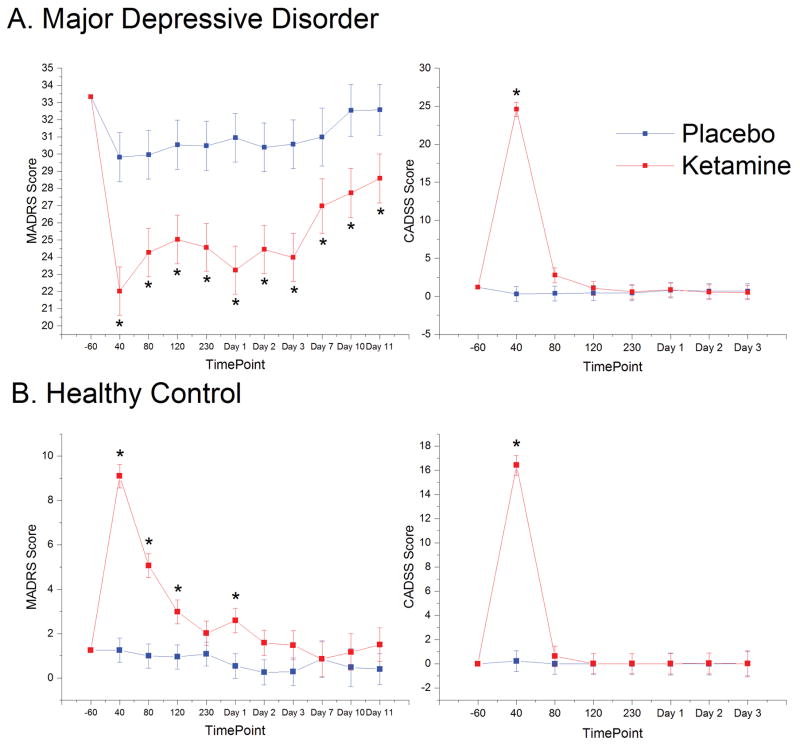Figure 1.
Effects of Ketamine on Mood. Graphs of the marginal means derived from the linear mixed models for the Montgomery-Åsberg Depression Rating Scale (MADRS) and Clinician Administered Dissociative States Scale (CADSS) time points significant at p<0.05 after Bonferroni correction are indicated with an asterisk. A) In major depressive disorder (MDD) subjects, MADRS scores demonstrated a significant main effect of drug (F1,559=140.70, p<.001; Supplementary Table S2). CADSS scores indicated significant main effects of drug (F1,414=57.66, p<.001), time (F6,380=43.61, p<0.001), and a drug by time interaction (F6,380=45.59, <0.001). CADSS scores peaked at 40 minutes post-ketamine (F1,389=326.7, p<.001); the effect of the drug was not significant at any other time point. B) In healthy controls, MADRS scores indicated significant main effects of drug (F1,328=61.87, p<0.001) and time (F9,314=14.31, p<0.001) and a significant drug by time interaction (F9,313=9.87, p<0.001). The increase in depressive symptoms was significant at 40, 80, and 120 minutes post-infusion and at Day 1. Seventeen of 24 healthy controls receiving ketamine (71%) showed an increase of at least five points on the MADRS at any time point, compared to only one of 23 healthy controls receiving placebo (4%). By Day 2, only one healthy control subject still scored above 5 on the MADRS. CADSS scores in healthy controls demonstrated significant main effects of drug (F1,274=26.21, p<0.001), time (F6,261=27.50, p<0.001), and a drug by time interaction (F6,259=26.01, p<0.001), with significant differences between ketamine and placebo observed only at the 40-minute time point.

